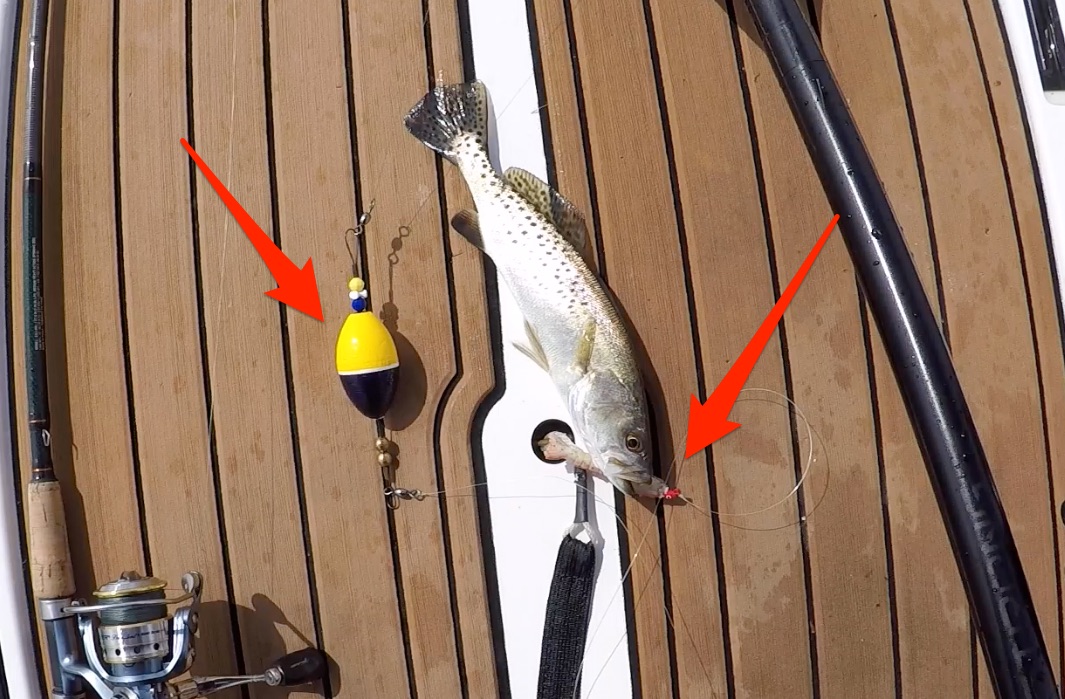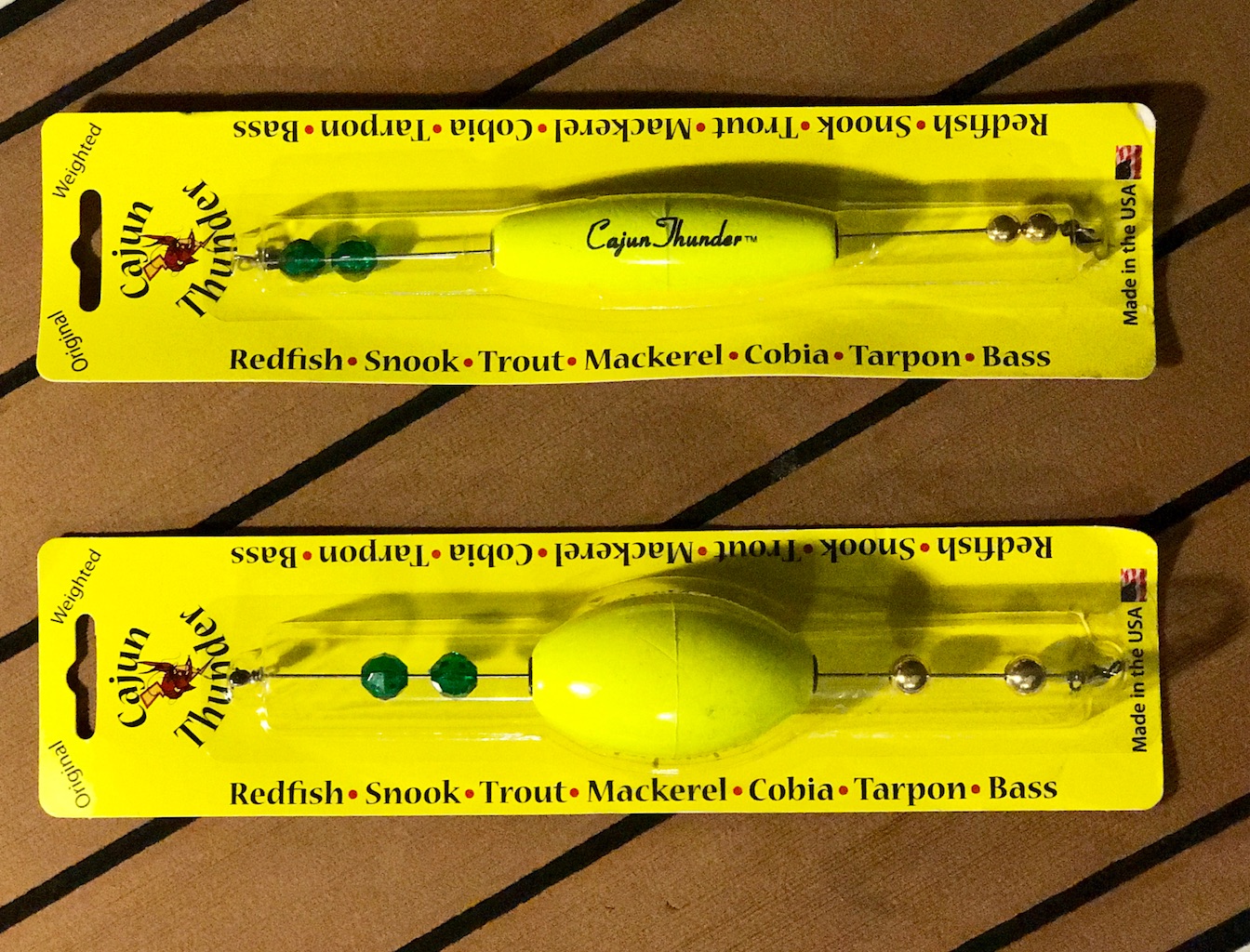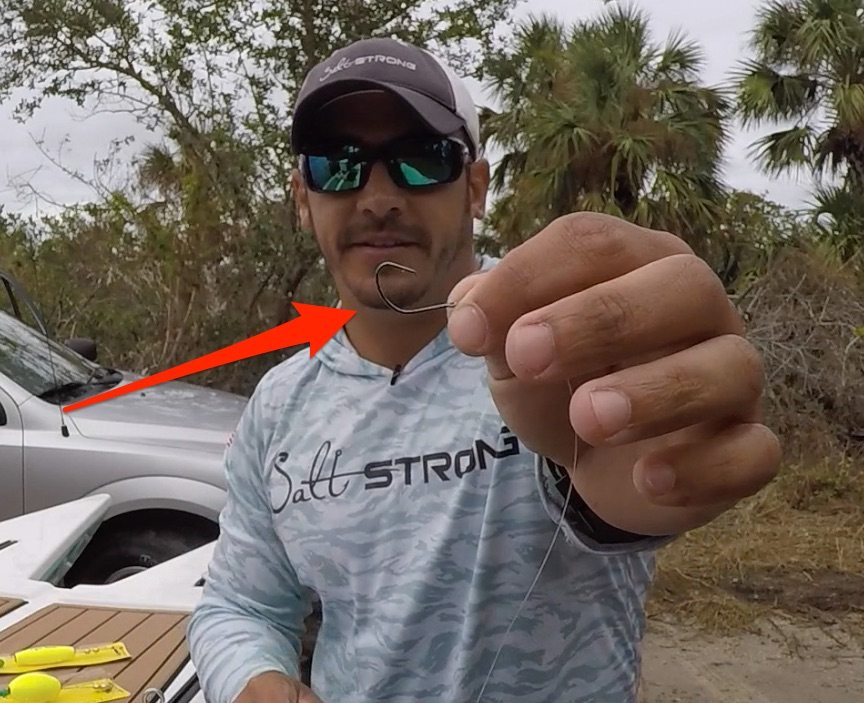How To Rig A Popping Cork For Redfish, Flounder, Snook, & Trout
- By: Tony Acevedo
- on
- Found In: Fishing Tips, Inshore Fishing, Live Bait Fishing Tips, Lure Reviews

It’s popping cork time!
I remember when I began inshore fishing, and trying to decide what type of lures to buy and what types of rigs to use.
Whenever you see a flats boat being towed to the ramp, it is almost guaranteed that you will see a rod standing tall amongst the ten other rods on the boat rigged with a bright yellow or orange float.
In most cases, these are popping corks.
They popping corks make a “clicking” noise when retrieved and you will typically have a lure or live bait of your choice attached to the cork by a leader.
The noise that they make is meant to imitate the sound of a crab, shrimp, or baitfish.
And the predator fish like redfish, snook, and trout love it!
Why & When To Use A Popping Cork?

If you are having trouble catching fish in dirty water, you may want to give the popping cork a try.
The noise and disturbance that it creates can draw the attention of a nearby predator in water with limited visibility.
The popping cork also gives a unique action to a soft plastic lure when retrieved.
As you give a tug on the popping cork, it will cause your lure to bounce up off the bottom as if it is a shrimp or baitfish fleeing from a predator.
It will then slowly fall back down to the bottom as you pause your retrieve.
Another advantage of a popping cork rig is that it is very user-friendly.
If you take a kid fishing or bring a friend along that is new to fishing, this rig is super easy to use for beginners and effective at getting them to catch a fish.
All you have to do is be able to cast and move the rod tip every now and then.
And with the weight of the cork and bait/lure, you can launch this even during windy days.
What Bait To Use With A Popping Cork?

The popping cork rig that I show in the video is very effective when used with artificial or live baits.
In fact, you can’t really go wrong with live bait, dead bait (dead shrimp), or artificial lures.
When using artificials, you will be doing most of the work having to retrieve the cork and produce the “clicking” noise to draw the fish to your lure.
My favorite artificial lure to use with a popping cork is the shrimp (either from Berkley Gulp or Z-Man).
I’ve caught countless inshore fish (from redfish, flounder, snook, and trout) using nothing more than a popping cork and a soft plastic shrimp.
Regarding live bait, you can’t go wrong with live or dead shrimp or any small bait fish.
Popping Cork Rigging Tips

When using live bait – especially bait fish – the bait will do most of the work.
As the baitfish swims and tries to flee, it will naturally cause the cork to pop and click, drawing even more attention to itself.
When using shrimp, or “lazy” baitfish that may be very stubborn and not want to move much, you will want to give the popping cork a few tugs every now and then to create the sound and disturbance to help attract the fish.
In the following video, I will be going over some tips for rigging and using a popping cork.
I was also able to get a strike on it while I was out filming (got to love when that happens).
Enjoy!
How To Rig Popping Corks [VIDEO]
Conclusion
In conclusion, these popping corks work!
As you can see in the video, I was even able to get a strike while out filming.
These popping corks are great year-round and they do one of the best jobs of attracting fish to your bait.
The best news is that even newbies can use these corks to catch fish.
Any questions about popping corks or how to rig them for certain situations?
Let me know in the comments.
Related Post: This Is The Only Time To Use A Swivel For Inshore Fishing (see it here now)
Hey there,
Do you want to join the only online fishing club that:
- Is open 24 hours a day, 7 days a week, 365 days per year…
- Actually shows you real spots and trends so you can outfish your friends…
- Guarantees you catch more fish or you don’t pay…
Then join the Insider Fishing Club today!
P.S. – If you think your angler friends or fishing networks would like to see this, please Tag them or Share this with them.
Fish On!
Related categories:
STOP WASTING TIME ON THE WATER!
Do what the “SMART ANGLERS” are doing and join the Insider Club.
Here’s what you’ll receive today when you join:
- Weekly fishing reports and TRENDS revealing exactly where you should fish every trip
- Weekly “spot dissection” videos that walk you through all the best spots in your area
- Exclusive fishing tips from the PROS you can’t find anywhere else
- Everything you need to start catching fish more consistently (regardless if you fish out of a boat, kayak, or land).









I assume you want to stay off the bottom with the lure/bait? 12″-18″ off the bottom? Will this work in deeper waters? Never tried a popping cork, but want to, if I can get the set up configuration per the water depth correct. Thanks
Hey John! Yes, just off the bottom or just above the structure you may be fishing. If fishing grass, I like to have the lure rigged weedless and have it set so it falls just barely into the grass, that way when you pop it the lure darts out of the grass like a fleeing shrimp or baitfish.
What’s your preferred rod and reel setup for utilizing a popping cork?
I use the same type of rod and reel for just about everything – 7’6 MH power and Fast action rod. 2500 to 3000 size spinning reel.
First time out wading. Everything worked as advertised. Great job.
Glad to hear it worked out for you Bill!
Great info
thank you
No problem Steve!
I learned a lot, thanks!!!
No problem Brian!
Tony – Good video. I also liked it first time. I rig an adjustable popping cork to allow for different depths. I use 30# flouro through a cork. Swivel, stopper,beads, cork,1/2 oz egg sinker, beads, stopper , then the rest of leader to hook or jig head. I use about 3 feet of usable leader and adjust using stoppers.
Another type of bobber used by some northern fisherman is a casting egg. I would imagine it could be an aid when surfcasting light bait or lures from southern shores as well, It is a wooden egg shaped bobber with a small post angled out near the top. You hang your bait on the post which helps improves the aerodynamics of your cast. When the egg hits the water the bait falls off the post. The egg fkoating with the wave action also adds life to your lure or bait. See Roger Martin’s You Tube video-
https://www.google.com/url?sa=t&rct=j&q=&esrc=s&source=web&cd=4&cad=rja&uact=8&ved=0ahUKEwiit6bYt57XAhUSy2MKHbEyAtIQtwIIODAD&url=https%3A%2F%2Fwww.youtube.com%2Fwatch%3Fv%3D17XoNP3Ic8I&usg=AOvVaw2am5YscLHaXesh0tRO7rir
Great tip Ralph, thanks!
When using a popping cork, if you add a about a 1 foot section of either 30 or 40 lb mono
above the cork and attached to the braid main line you will eliminate the tangling of the braid around the cork.
My understanding is that the brass beads on the popping cork are not just for weight, but also that when they click together they sound like the clicking sound that shrimp make. It adds an additional attraction, drawing fish from farther away.
Yep they also create a more unique sound when retrieving the cork as opposed to all plastic or glass beads.
Richard Boettcher is correct ( I do have problems with the braid wrapping on the cork. I see one comment to add mono above the cork. Think this will solve the problem?)